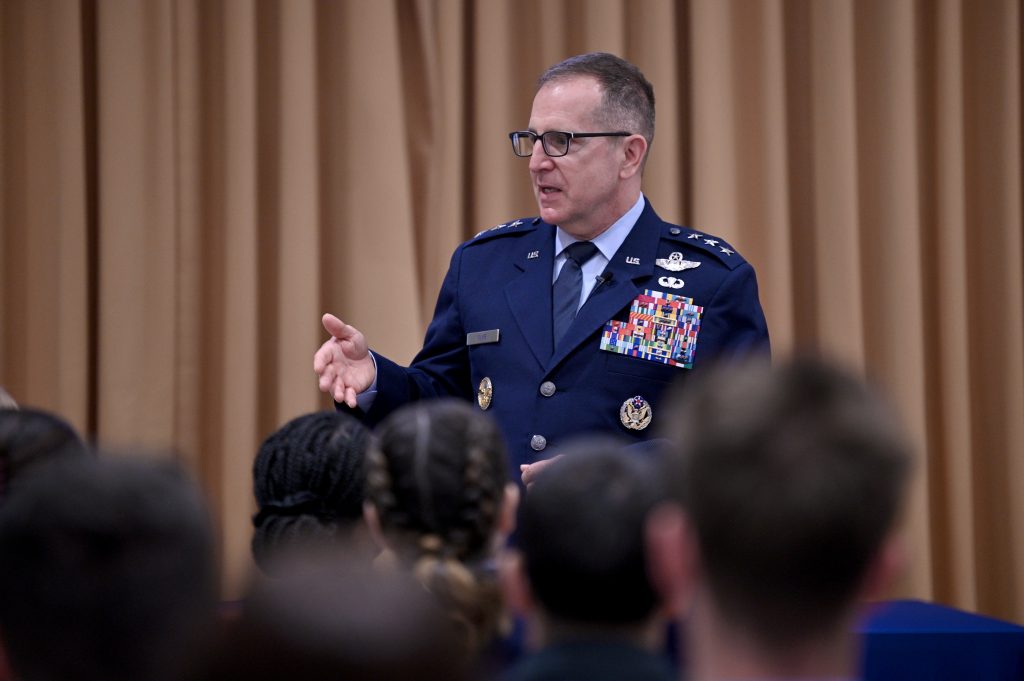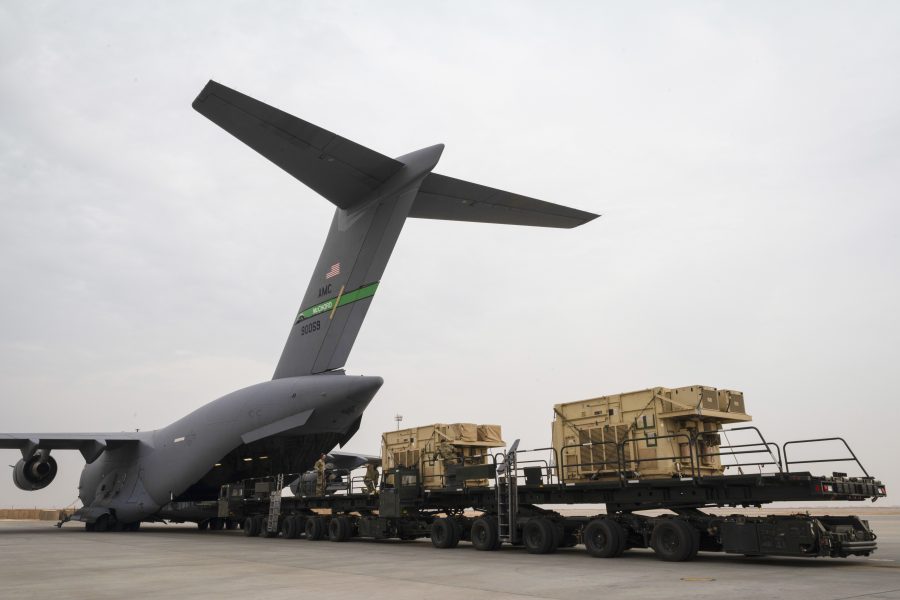In an attempt to build more cohesive teams of Airmen, the Air Force will test out a new system for grouping and deploying troops overseas, top service leaders announced last week at AFA’s Air, Space & Cyber Conference.
Air Task Forces, or ATFs, are intended to replace the service’s model of Air Expeditionary Wings with “forces all packaged together in a light-footprint, deployable unit,” deputy chief of staff for operations Lt. Gen. James C. “Jim” Slife told reporters.
Under the current system, small groups or individual Airmen with different unit type codes are pulled piecemeal from across the service for deployments.
“We deployed wings to Desert Storm,” Slife said. “We no longer deploy wings … we deploy bespoke collections of UTCs that have never trained together before they get to where the action is. That has been an efficient way to operate. It largely works in a relatively uncontested environment where you have large main fixed operating bases that are going to be free from attack. That’s not the world we’re living in anymore.”
In contrast, ATFs will consist of Airmen who train and deploy together under the new Air Force Force Generation Model and include different “force elements” allowing them to function more independently. Specifically, Slife pointed to four elements every ATF will need:
- Command: A commander, deputy commander, senior enlisted leader, and expeditionary “A-staff” patterned off the Air Staff to provide support for the commander. According to an Air Force release, ATF commanders will be colonels, the deputies will be lieutenant colonels with at least one squadron command assignment, and the senior enlisted leader will be a command chief master sergeant.
- Mission Generation: Operational, maintenance, and intelligence forces—“all of the things you need to generate sorties on a day-to-day basis,” Slife said. Some will include fighter aircraft, others airlift, other ISR, and so on.
- Combat Support: The forces necessary to establish a base and enable the mission, like civil engineers.
- Combat Service Support: Personnel needed for “running a main operating base, providing for airfield security, air traffic control, lodging, sustenance, all those types of things at a main operating base,” Slife said.
A June release from the Air Force broke down force elements even further based on specific function like opening, establishing, operating, and “robusting” an air base; command and control; different kinds of missions like air superiority or intra-theater airlift; or “Demand Force Teams” for highly specific skillsets.
Not every Air Task Force will have all of those more specific force elements, Slife said.
“If you’re going to INDOPACOM to do a series of exercises, you may not need a substantial force protection capability as part of that task force, for example,” Slife said. “If you’re going to CENTCOM, where there is a large main operating base that is reasonably well developed, you may not need as many civil engineers as if you were going to build from scratch.”
The service is still figuring out the exact formulations. To that end, Air Force Secretary Frank Kendall announced during his keynote speech that he had approved the creation of three Air Task Forces “to serve as pilots in order to experiment with ways to more effectively provide deployable integrated units.”
Two of those ATFs will be for the U.S. Central Command area of responsibility, and one will be for U.S. Indo-Pacific Command.
“These are not the final permanent deployable units we expect to form, but they are a major step in the right direction and we will learn from this experience,” Kendall added.
In a subsequent release, the Air Force detailed that the ATFs will group, train, and deploy Airmen and units together as part of the new four-phase Force Generation Model. They will also include the expeditionary air base squadron teams the Air Force introduced last year.
The pilot task forces will officially enter that force generation model in the summer of 2024 and deploy beginning in the fall of 2025. The exact units involved in the task forces were not disclosed, and more details will be released in the coming months, the release stated.
Still, the move reflects a broader shift within the Air Force to organize itself around missions, not functions, said Slife, who has been nominated for Vice Chief of Staff. As he has in the past, Slife expressed concern that the service has centralized resources to become more efficient—at the cost of flexibility.

In that regard, Air Task Forces go hand-in-hand with some of the Air Force’s other major initiatives like Agile Combat Employment and Multi-Capable Airmen. In order to have teams of Airmen that can disperse from central hubs to operate from remote or austere bases—like ACE calls for—the service will need to include support and command elements. In order to keep those teams lean and agile, Airmen will have to be ready to take on duties outside their career specialties.
Getting Airmen ready for these challenges and new ways of operating is “100 percent dependent on having a disciplined force generation cycle that allows you the time and space to train,” Slife added. And staying disciplined means some Airmen won’t always be available for their usual jobs at their home bases.
“AFFORGEN is going to allow us to accept some moderate, prudent risk in day-to-day garrison operations in order to build and train these Multi-Capable airmen teams and then deploy them as part of a task force,” Slife said.
